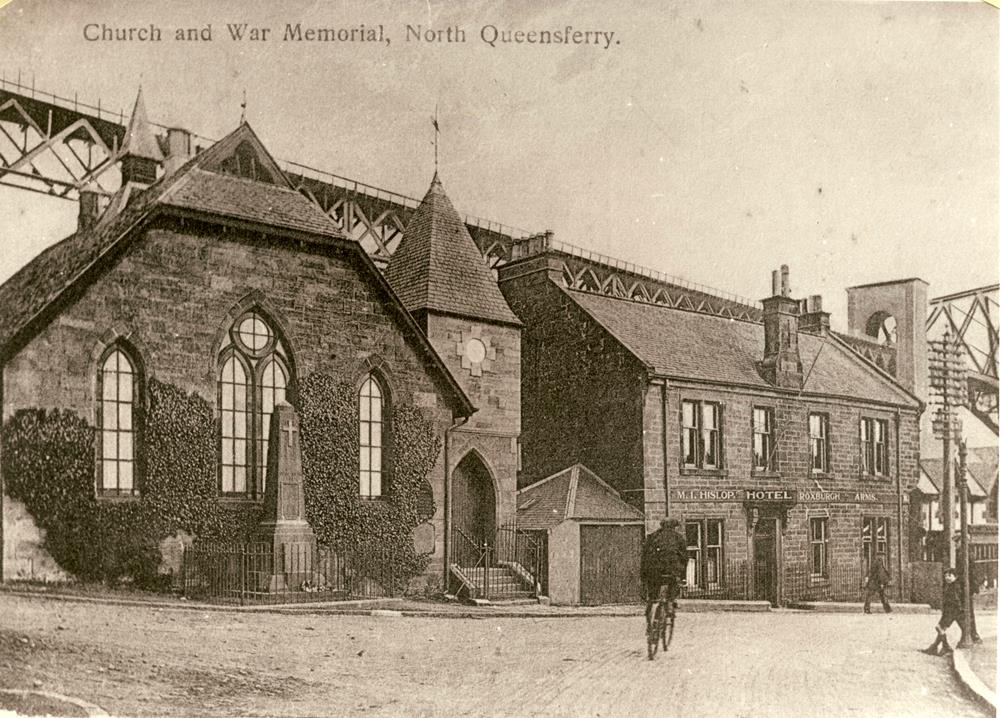1878 – The new Free Church
| < 1876 – Looking to the Future | Δ Index | Location of the Free Church > |

Dunfermline Press – Saturday July 13 1878.
Opening of the new Free Church at North Queensferry.
Saturday July 20 1878 – Opening of the new Free Church at North Queensferry.
The want of a place of worship has long been felt in Queensferry, and to those who had the wish to be regular attenders on the services of the sanctuary, the want was deeply felt. Inverkeithing, where the nearest place of worship is, is two miles from it, and on any stormy or wet day, to go that distance to church was out of the question.
How long this state of things would have continued it is not for us to say; but we believe that the late Provost Robertson was the first to try to amend matters, by providing a place where religious services could be held. After his death, the matter was taken up by the Rev. Mr Brydie, late of St Andrew’s Free Church, who did his utmost to establish a place of worship in the village, but he was called away to another sphere of labour before it was accomplished. With the addition of the railway to the village, and being in close proximity to Dunfermline, it was thought that many would take advantage of Queensferry as a summer resort, and the Free Church Presbytery of Dunfermline then took up the matter of providing religious ordinances for the people, and a committee was formed for that purpose.
The Hall in connection with the Hotel was secured, and the Rev. J. M. Allan, late of Canada, was engaged to labour in the district; and he has done so with such success as to obtain a grant from the Home Mission Fund for its constitution as a Mission Church.
A scheme was then organized for the erection of a church and hall by the Rev. Mr Shiach, of the Free Abbey, Dunfermline – which project, however, fell through and was abandoned. A number of influential persons, however, took an interest in the matter, and a fund was raised by voluntary subscriptions – among the subscribers to which was Mr Elder of St Margaret’s, who, in addition to presenting the Presbytery Committee with the site of the Church, gave the handsome donation of £100. His brother followed with a similar sum. Mr Sivright of the Cliff, gave £30; and Mrs Douglas, Craigdhu; Mr Henderson, Fordell; and Mr Newton, of Castlandhill, subscribed £25 each. These sums, along with a number of smaller gifts, raised the building fund up to between £400 and £500.
The amount of interest thus manifested in the scheme made the Presbyterial Committee feel justified in setting “the ball a-rolling;” and Mr Scobie, architect, was communicated with, who prepared plans for the erection of the Church, which were approved of, and the building was thereafter commenced, and, after a lapse of fully three months, has been erected.
The Church, which in every way harmonises with the locality in which it is located, is in design a simple adaptation of the Gothic style of architecture, and is situated at the entrance to the village on a commanding site overlooking the sea. The front elevation presents a gable with a central mullioned window, having the lights finished with elliptical beads mitred into a circular frame. On either side of the window a smaller light is placed, corresponding in style with the principal aperture. The entrance door, which, along with the minister’s room, is situated to the right of the front of the building, is surmounted by an elliptical head, and the whole front is finished in fine-dressed freestone. The windows throughout the design are finished with freestone dressings, while the walls have been built with whin rubble. The north and south elevations are lighted by single windows with cusped lintels. The roof is highly pitched, and crowned with a belfry-turret, the bell of which has been presented by Mr Wilson.
The interior of the building, which has a very comfortable appearance, is seated for about 230 persons, the seats being fixtures with bound backs made of yellow pine. A platform has been erected instead of a pulpit for the accommodation of the minister, and the walls are wainscoted five feet high.
Altogether, the building is a very unique production, and reflects great credit on Mr Scobie, and the several tradesmen employed in its erection, and will, no doubt, be much appreciated by the villagers. Mr Arnot, merchant, Inverkeithing, had kindly presented the Church with chandeliers for the lighting up of the pulpit and the lobby.
There were two services: –
Morning, at 11 o’clock, – Rev. James Begg, D.D. Afternoon at 3 o’clock, – Rev. J. M. Allan, M.A.
Collections were taken in aid of the Building Fund.
Donations to be received by the Rev. J.M. Shiach, Free Abbey Church, Dunfermline.
| < 1876 – Looking to the Future | Δ Index | Location of the Free Church > |